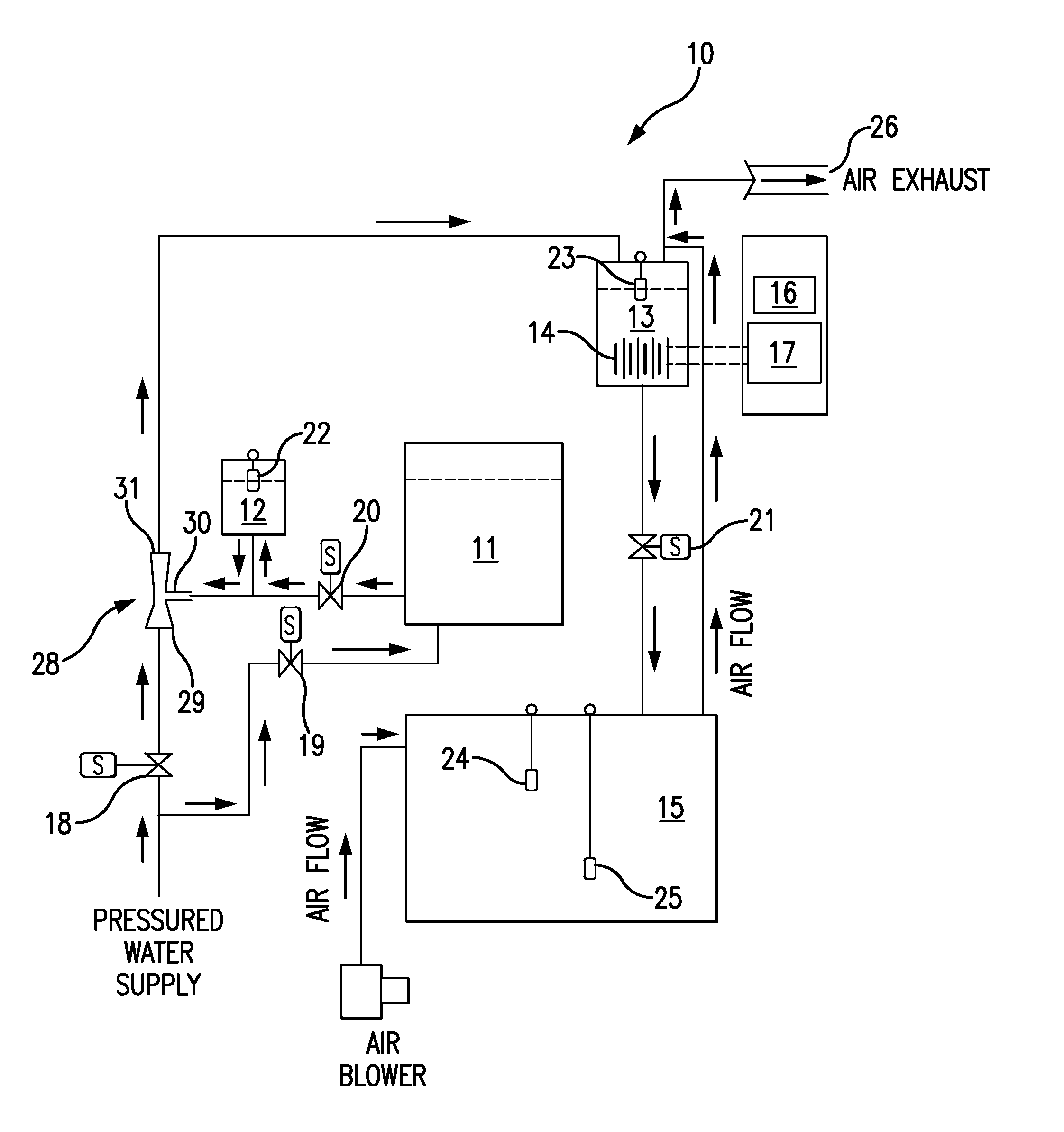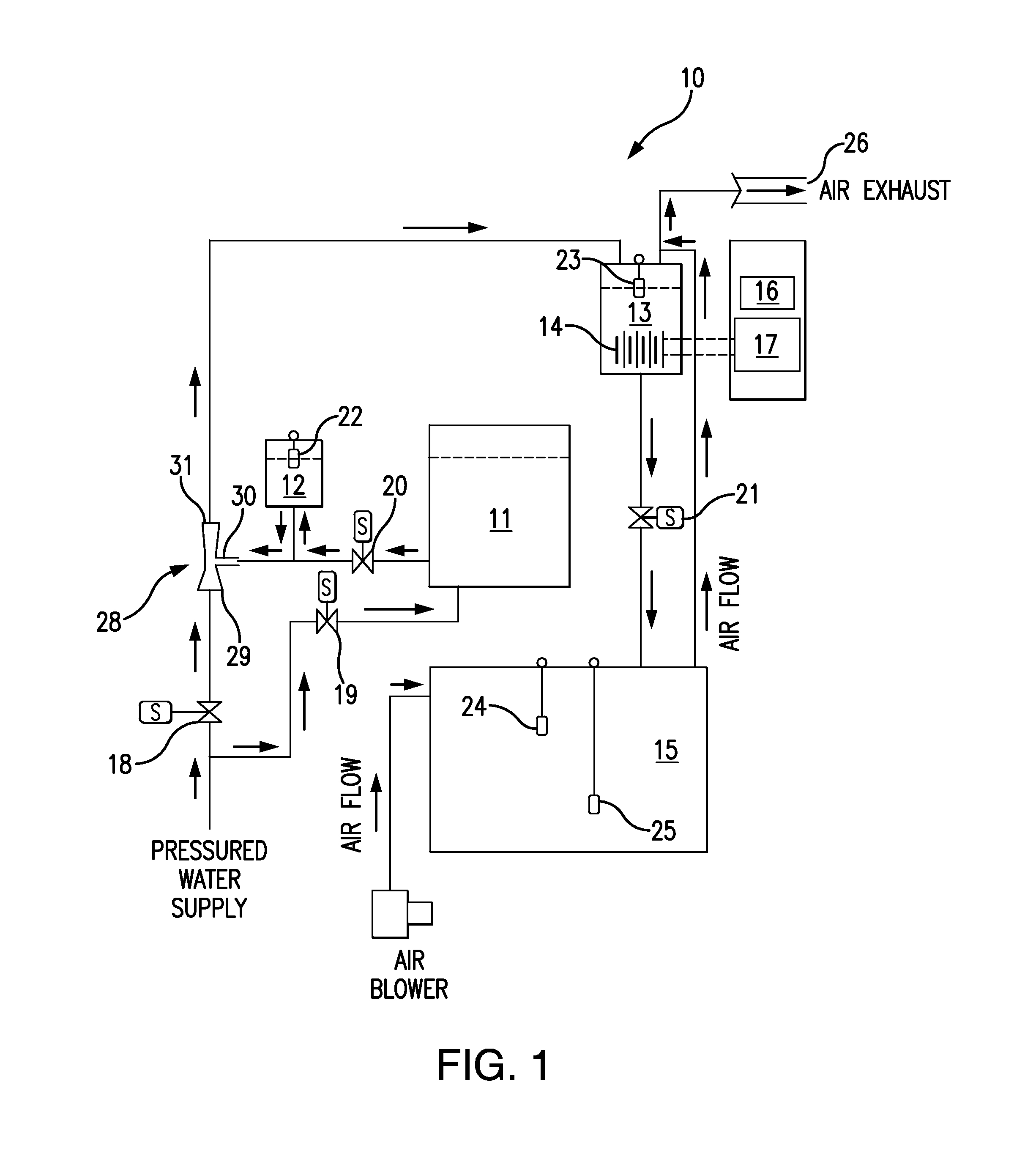Low Capacity Sodium Hypochlorite Generation System
a sodium hypochlorite and generation system technology, applied in the field of low capacity systems, can solve the problems of not being suited to low capacity situations, high maintenance costs, and inconvenient to operate, and achieve the effects of cost saving, cost saving, and reduced chemical costs
- Summary
- Abstract
- Description
- Claims
- Application Information
AI Technical Summary
Benefits of technology
Problems solved by technology
Method used
Image
Examples
Embodiment Construction
[0011]Referring to FIG. 1, the LCHG system 10 has a series of process tanks, comprising a salt saturator tank 11, a brine batch tank 12, a reactor tank 13, an electrolytic unit 14 within the reactor tank 13, and a product tank 15. The electrolytic unit 14 preferably consists of a series of undivided monopolar electrolytic cells that are externally electrically interconnected.
[0012]Controlling the sequence of LCHG operations is a programmable logic controller (PLC) 16. Electrical power to energize the electrolytic unit 14 is provided by a power supply 17.
[0013]The process tanks are hydraulically interconnected, with a series of solenoid valves, 18, 19, 20 and 21, controlling the flow between the tanks Filling of the tanks is regulated by float switches, 22, 23, 24 and 25. A blower 26 is provided to vent hydrogen gas generated by the electrolytic unit 14. A water source 27 furnishes a pressurized flow of water, which can be directed either to the saturation tank 11 or to an eductor 28...
PUM
| Property | Measurement | Unit |
|---|---|---|
| Fraction | aaaaa | aaaaa |
| Fraction | aaaaa | aaaaa |
| Concentration | aaaaa | aaaaa |
Abstract
Description
Claims
Application Information
 Login to View More
Login to View More - R&D
- Intellectual Property
- Life Sciences
- Materials
- Tech Scout
- Unparalleled Data Quality
- Higher Quality Content
- 60% Fewer Hallucinations
Browse by: Latest US Patents, China's latest patents, Technical Efficacy Thesaurus, Application Domain, Technology Topic, Popular Technical Reports.
© 2025 PatSnap. All rights reserved.Legal|Privacy policy|Modern Slavery Act Transparency Statement|Sitemap|About US| Contact US: help@patsnap.com


